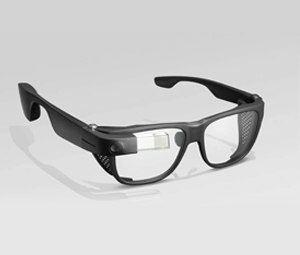
Google has announced that its latest smart AR glasses will start appearing in public spaces as part of a company test to convert the prototypes into practical devices. But don’t be concerned about privacy as the company has confirmed that the AR prototypes will have their photography and videography functions disabled during the real-world testing.
Google unveiled a prototype pair of AR-based smart glasses at this year’s Google I/O conference in May that can translate languages in real-time and exhibit the corresponding text over the lenses. The tech giant has now announced that it plans to test these ‘smart glass’ prototypes in public, beginning next month. They want to take its smart glasses from the lab into the real world, the company announced in a blog post. “So, starting next month, we plan to test AR prototypes in the real world. This will allow us to better understand how these devices can help people in their everyday lives”, wrote Juston Payne, Google’s Group Product Manager.
In the initial phase, the trials will be conducted on a ‘small scale’ involving only a few dozen Google employees and some ‘select trusted testers’ who will be wearing the smart glasses. The testers and employees participating in the test must undergo ‘protocol, privacy, and safety training’.
For now, the company plans to use the devices outdoors and in urban environments. “As we develop experiences like AR navigation, it will help us take factors such as weather and busy intersections into account—which can be difficult, sometimes impossible, to fully recreate indoors,” the company said. However, it has been noted that the tests will steer clear of involving schools, churches, hospitals, government buildings, and any areas meant for children.
The prototypes will come equipped with an in-lens display, camera, and microphone. The AR features of the glasses rely on audio assistance that can use built-in cameras to recognize objects in an environment through AI. The functionality is similar to how Google Lens recognizes objects and texts with phone cameras. However, they will not be able to take photos or videos since Google is limiting those features on its field-tested glasses. The focus will remain mainly on how the glasses can train their AI to understand the world better.
The smart glasses look almost like a pair of regular spectacles. However, unlike Facebook’s publicly available and normal-looking Ray-Ban Stories glasses, that are designed for taking photographs and listening to music, Google is focusing on utility and assistive uses in its smart glasses.
- Microsoft OneDrive Is Getting a Range of New AI-Powered Updates - November 8, 2024
- ChatGPT’s Explosive Growth: 50 Million Users in Just 2 Months! - October 25, 2024
- Google Search Now Features An AI-Powered Grammar Checker - August 8, 2023




